Exploring Lyme Regis brought me this odd mix of excitement and calm. Here’s a small Dorset town that’s famous for fossils, wild coastal views, and, of course, that classic novel and film, The French Lieutenant’s Woman.
Lyme Regis stands out with its blend of history, natural beauty, and literary connections.
When I wandered along the Cobb Harbour, I couldn’t help but picture Meryl Streep bracing herself against the wind—just like that famous scene. The beach is honestly full of fossils waiting to be found, so whether you’re a history buff or just love the thrill of a treasure hunt, it’s perfect.
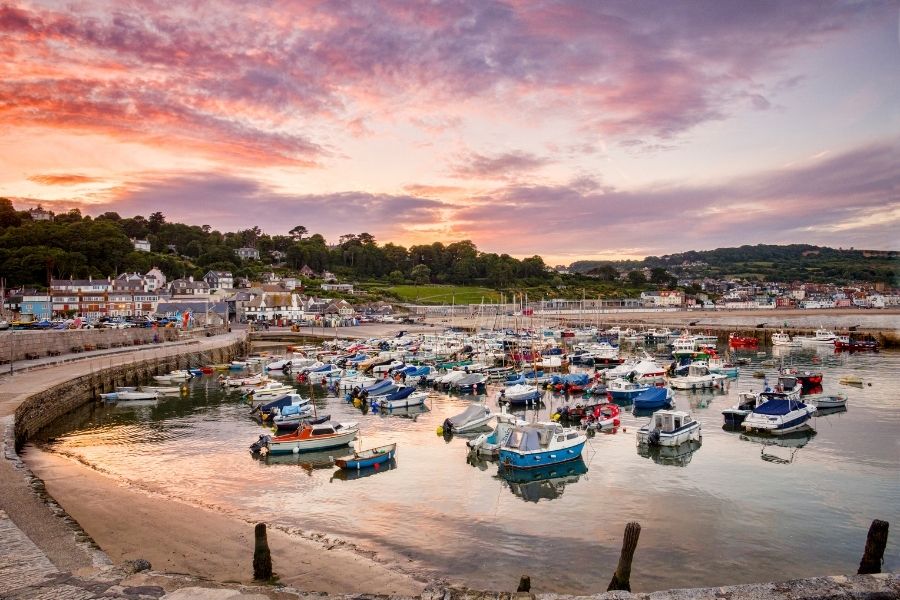
Every corner here feels heavy with stories. The cliffs hide ancient secrets, and the winding streets inspired writers. My visit to Lyme Regis felt like stepping into another world, where even the stones and the salty air promised a new discovery.
Lyme Regis: Dorset’s Coastal Gem
Lyme Regis sits on the Jurassic Coast and offers a quirky mix of history, natural beauty, and that laid-back seaside spirit. Its harbor, busy main street, and the iconic Cobb all play their part in the lasting charm of this Dorset coastal town.
Victorian Lyme Regis and Broad Street
Walking down Broad Street, I spot traces of Victorian Lyme Regis in the old shopfronts and facades. Many buildings date back to the 19th century, giving the town its distinct look.
The Victorians made Lyme Regis popular as a seaside getaway and shaped much of what you see today. Craft shops and cafés line the street, and some traditional sweet shops still sell old-fashioned treats.
I’m always drawn to the local bakeries—some recipes have survived for generations. Broad Street runs straight to the seafront, so there’s usually a salty breeze in the air.
During the Victorian era, Lyme Regis got better roads and stronger sea defenses. The railway brought more visitors, all chasing clean air, sea views, or the thrill of fossil collecting.
Many of the places I love to visit were once packed with well-dressed holidaymakers.
The Role of Harbour and Cobb in Town Life
The harbor buzzes with life in Lyme Regis. Fishing boats and pleasure craft sit side by side, and both still matter to the local economy.
The Cobb, that curved stone breakwater, shields the harbor from storms and wild seas. When I walk along the Cobb, I feel its long history under my feet.
Builders started it back in the 13th century and kept adding to it, turning Lyme Regis into a key Dorset port. Ships once loaded timber, stone, and all sorts of goods here.
The Cobb’s wide walkway is open to everyone. On blustery days, waves sometimes crash over the side.

Seafood stalls and benches line the harbor area. I like to sit there, watching boats bob in the water.
The Cobb also earned fame from The French Lieutenant’s Woman, and its windswept look on film is unforgettable.
The Allure of Dorset’s Coastal Towns
Lyme Regis stands out among Dorset’s coastal towns for its small size, fossil-rich cliffs, and that unmistakable sense of place. It’s got history and natural beauty, making it ideal for a quick trip or a longer escape.
Unlike bigger resort towns, Lyme Regis keeps things slow. I find it easy to explore on foot, whether I’m climbing up toward the church or heading down to the pebble beach.
Cafés, galleries, and indie shops fill the narrow lanes, so there’s always something to discover. The views stretch across Lyme Bay, with the sea on one side and Dorset’s rolling hills on the other.
I notice families searching for fossils, couples strolling the pier, and locals chatting outside market stalls. That open, friendly vibe is what keeps pulling me back.
The Cobb Harbour: Charm and Heritage
The Cobb Harbour grabs your attention with its striking stone wall—a quirky mix of old-world design and local tradition. I found history and daily harbor life bumping up against each other here.
The area also features coastal landmarks and a few local homes, like Belmont.
History and Architecture of The Cobb
The Cobb is a curving, man-made harbour wall, mostly built from stone. Some parts date back to the 13th century, though people have rebuilt it several times.
Its origins are tied to Lyme Regis’s rise as a port and shipbuilding spot during medieval times. The name “The Cobb” might come from an old word for rounded shapes or wooden supports.
Steep steps like “Granny’s Teeth,” made famous by Jane Austen’s Persuasion, are key features. The harbour wall gives you sweeping views across Lyme Bay.
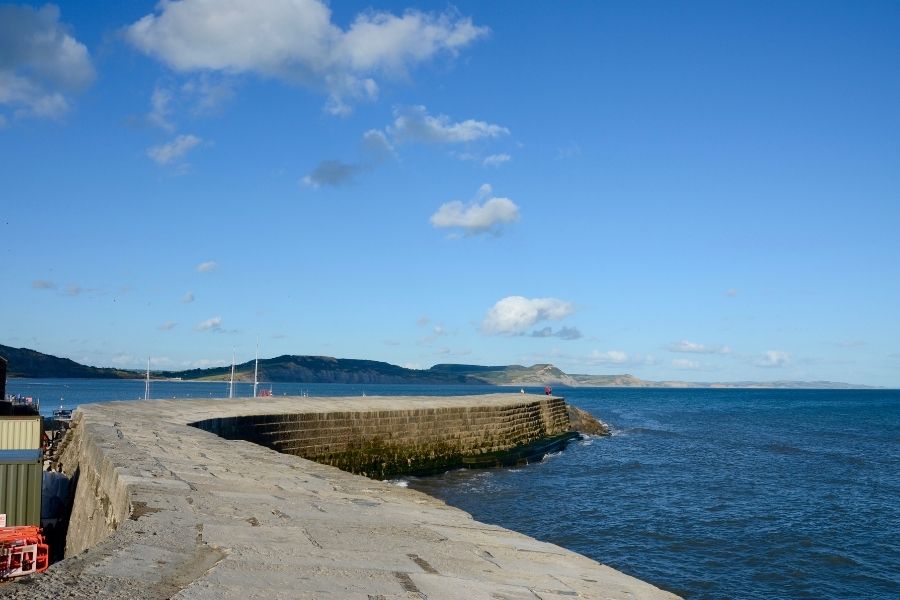
Strong stonework and that signature curve protect the town from storms, making it both practical and beautiful. Plenty of films have featured The Cobb, but The French Lieutenant’s Woman is the one everyone remembers.
Standing on the wall, I instantly recognized those famous stone steps and the moody atmosphere from the movie.
Fishing Boats and Maritime Traditions
Fishing still matters at The Cobb. Small, colorful boats bob in the harbour, and the scent of the sea is everywhere.
Local fishers bring in mackerel, crab, and bass. These boats supply restaurants and markets, keeping old traditions alive.
Maritime customs shape the daily rhythm here. Each morning, I watch boats launch with the tide, then return in the afternoon.
The Cobb’s design shelters this small fleet from rough seas. Sometimes, the harbour hosts festivals or regattas that celebrate local history.
These events draw residents and visitors to the water’s edge, making it lively all year.
Belmont and Coastal Landmarks
Belmont, that white Georgian villa, overlooks The Cobb. Author John Fowles, who wrote The French Lieutenant’s Woman, once called it home.
Today, Belmont stands out as one of Lyme Regis’s best-known historic houses and you can spot it from the harbour wall. Other landmarks include those distinctive stone steps and the curve of The Cobb itself.
On clear days, I see boats heading out to sea, the beach stretching toward Charmouth, and Lyme Regis’s rooftops in the background.
A small lighthouse sits at the tip of The Cobb. Its steady beam guides fishing boats home at dusk, while visitors stop to snap photos or watch the waves.
This mix of historic homes and working landmarks gives the harbour its unique character.
Fossil Hunting Along the Jurassic Coast
Lyme Regis is a dream for fossil hunters. Rare finds, expert advice, and wild stories make this stretch of the Jurassic Coast both fun and fascinating.
Fossil Finds: Ammonites, Ichthyosaur, and Plesiosaur
Nearly every time I walk the beaches at Lyme Regis or nearby Charmouth, I spot the coiled shapes of ammonites hiding in the rocks and shingle. These spiral fossils are over 180 million years old and turn up everywhere.
Some lucky souls have discovered much rarer treasures. The first correctly identified ichthyosaur skeleton came out of Lyme Regis, and people have found bits of massive marine reptiles like the plesiosaur too.
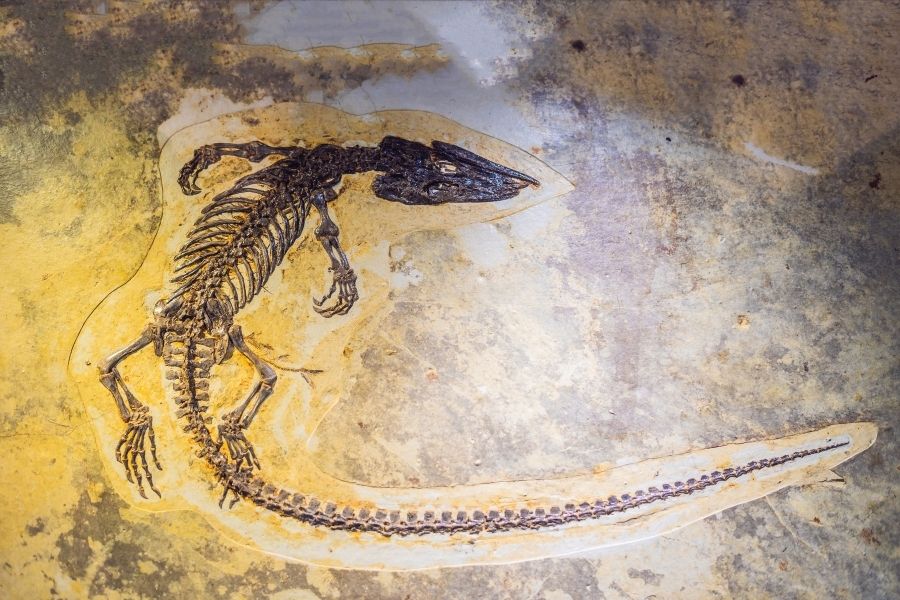
The cliffs sometimes reveal belemnites, fossilized shells, or even ancient plant remains. The variety and condition of fossils here always surprise me.
Here’s a quick cheat sheet for what you might find:
| Fossil Type | Typical Size | Where to Find |
|---|---|---|
| Ammonite | 1–15 cm | Shingle, loose rocks |
| Belemnite | 2–10 cm | Shingle, mud on beach |
| Ichthyosaur | Bones/skeletons | Rare, in cliffs or landslips |
| Plesiosaur | Bones/skeletons | Rare, in cliffs |
Famous Fossil Hunters: Mary Anning and Beyond
Lyme Regis owes a lot to Mary Anning, the local fossil hunter who started combing the beach as a child in the 1800s. She discovered the first nearly complete ichthyosaur and plesiosaur skeletons, changing how people see prehistoric life.
Mary found fossils no one had seen before, although she got little recognition then because she was a poor woman. Her story now inspires fossil hunters of all ages.
Walks along the coast honor her achievements and share her passion for science. Other collectors have followed in her footsteps.
Fossil hunting in Lyme Regis is still popular, and sometimes amateurs make important finds. The thrill of possibly discovering something rare keeps me coming back.
Lyme Regis Museum and Fossil Displays
The Lyme Regis Museum sits near the seafront, just steps from the beaches where Mary Anning hunted. Inside, you’ll find impressive displays of local fossils—ammonites, belemnites, and those rare marine reptiles.
I love this museum because it brings both science and history to life. There are detailed models, real skeletons, and plenty of info about how these fossils formed in Jurassic seas.
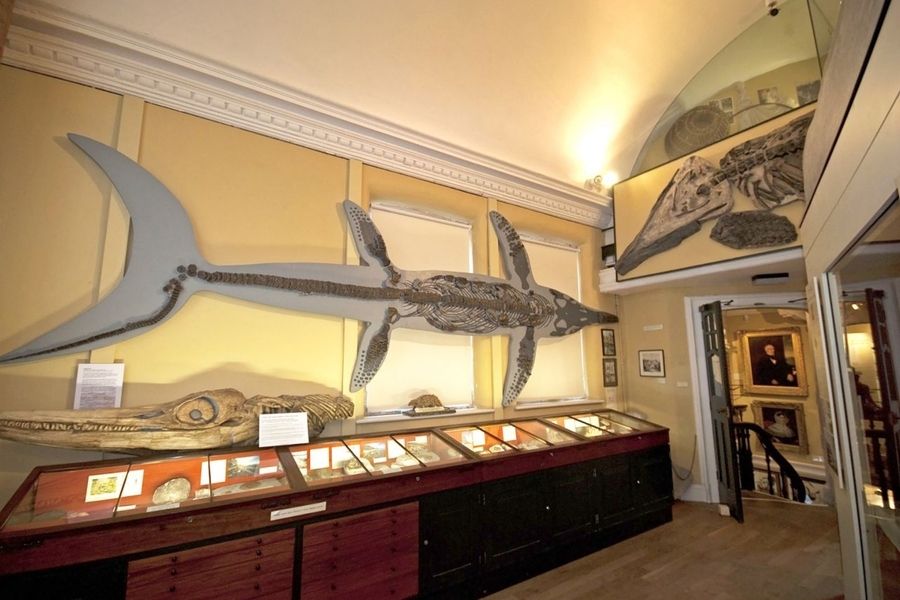
Interactive exhibits let you handle real fossils and learn to spot your own beach finds. The museum also runs talks and activities for all ages.
Every visit, I pick up something new—maybe about fossil preparation, geology, or Mary Anning herself.
Guided Fossil Hunting at Charmouth
If you want the best shot at finding fossils (and staying safe), go for a guided walk from Charmouth. Local guides know the geology and show you where fossils hide.
Walks last about 2.5 to 3 hours and welcome total beginners. Guides help identify fossils, explain beach safety, and share stories about the area.
They often bring you to spots where fresh landslips have exposed new rocks packed with ammonites, belemnites, and sometimes even marine reptile bones.
Booking a walk is easy through the Lyme Regis Museum or local providers. These guided hunts are super popular and great if you’re new to the hobby.
I always learn something new and usually leave with fossils I found myself.
The French Lieutenant’s Woman: Literary and Cinematic Connections
Lyme Regis shot to fame in literature and film thanks to John Fowles’ novel and its movie adaptation. Both brought attention to the town’s history, Victorian scenery, and the haunting figure of Sarah Woodruff on the Cobb.
John Fowles’ Legacy and Novels Set in Lyme Regis
John Fowles lived in Lyme Regis for years and wrote much of his work here. His most famous novel, The French Lieutenant’s Woman, is set in Victorian Lyme Regis.
He finished the book while living at Belmont, that grand Georgian house overlooking the sea. Fowles had a knack for blending history, psychology, and setting.
Not just The French Lieutenant’s Woman, but also books like The Magus and The Collector have that strong sense of place. Still, Lyme is most central in this Victorian love story.
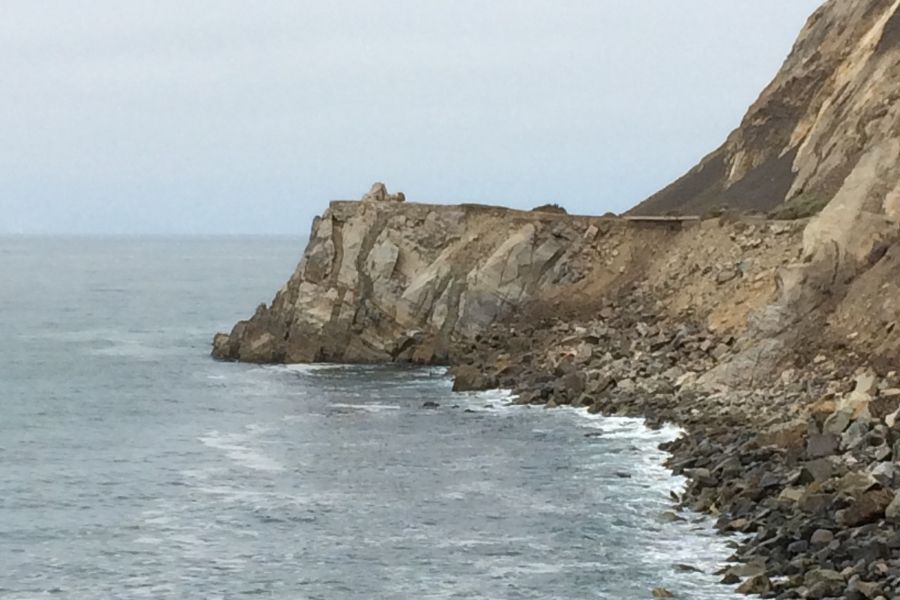
The town’s winding paths, fossil-rich cliffs, and the ancient Cobb harbour shape the mood of the narrative.
The French Lieutenant’s Woman Film: Meryl Streep and Jeremy Irons
The film version of The French Lieutenant’s Woman came out in 1981. Meryl Streep played Sarah Woodruff, and Jeremy Irons played Charles Smithson.
They shot large parts of the movie right in Lyme Regis, especially around the Cobb and the stormy coastline. For six weeks, Lyme Regis transformed to look like Victorian times.
The filmmakers worked hard to capture the wild sea and the drama of the setting, just as Fowles described it. Scenes of Streep’s character standing alone on the Cobb in the wind became iconic.
Sarah Woodruff and the Power of Setting
Sarah Woodruff, the “French Lieutenant’s Woman,” stands out as one of English fiction’s most memorable characters. Her presence is tied to Lyme Regis, especially the Cobb—a long, curved breakwater stretching into the sea.
Sarah comes across as mysterious and a bit of an outsider, often gazing out to sea. The cliffs, fossils, and sudden weather shifts around Lyme seem to echo her feelings.
Walking the same paths and standing on the Cobb makes her story feel immediate and real. It’s a reminder of how setting can shape both character and mood in powerful ways.
Experiencing Modern Lyme Regis: Attractions and Hidden Delights
Lyme Regis has this way of blending coastal charm, quirky history, and a bunch of activities I honestly didn’t expect. Sure, fossil hunting gets all the buzz, but there’s so much more—think hands-on marine adventures, scenic walks, and a surprisingly rich literary vibe.
Marine Aquarium and Local Activities
When I wandered into the Lyme Regis Marine Aquarium, it felt like stepping into a secret world tucked right on the harbour. I got to meet local fish, starfish, and even a few cheeky crabs.
The touch tanks? Honestly, they’re a highlight—nothing beats actually feeling the creatures you’ve only ever seen behind glass.
Since the aquarium sits on the historic Cobb harbour, I paired my visit with a walk along the old stone wall. I joined a feeding session, which was as entertaining as it was informative. The staff didn’t just rattle off facts; they chatted, answered my random questions, and seemed genuinely excited about the sea life.

Outside, the harbour buzzed with energy. Paddle boarders glided past, sailors prepped their boats, and I even watched a few kayaks launch right from the slipway. If you’re not up for getting wet, just watching the action is pretty satisfying.
Key Activities:
| Activity | Location | Highlights |
|---|---|---|
| Marine Aquarium | Cobb Harbour | Touch tanks, feeding sessions |
| Boat Trips | Cobb Harbour | Coastal views, wildlife spotting |
| Watersports | Seafront | Paddle boarding, kayaking |
Walking the Undercliff and Coastal Paths
One hike that really stuck with me was the Undercliff trail between Lyme Regis and Axmouth. It’s wild, dramatic, and honestly a bit mysterious. Expect about 4–5 hours of walking through thick woodland and random clearings where the sea suddenly appears.
The path gets uneven and slippery in places, so I made sure to wear proper boots. Sometimes you’ll hear nothing but bird calls, and if you’re lucky, you’ll spot rare plants hidden among the trees.
This stretch feels like Dorset at its wildest. There’s a peacefulness out there that’s hard to describe—just you, the wind, and the sound of the sea somewhere below. The route is waymarked, but I’d recommend bringing water and snacks, since you won’t find shops or cafés along the way.
If you’re after something more chilled, the South West Coast Path is perfect. It’s well-maintained and offers quick access to views of Golden Cap and Charmouth Beach.
These shorter walks let you soak up the cliffs and coastline that give Lyme Regis its magic.
Historic Inspirations: Persuasion and Anna
Lyme Regis has deep roots in classic English literature. When I walked by the Cobb, I couldn’t help but picture Jane Austen’s Persuasion—that unforgettable moment when Anne Elliot and Louisa Musgrove wander along the harbour.
Standing right at the edge of the Cobb, with the salty spray hitting my face, it hit me why Austen picked this spot for such a pivotal scene. There’s something about the wind and the waves that just feels dramatic.
The 1981 film The French Lieutenant’s Woman, with Meryl Streep as Anna, also used the Cobb’s curved wall for some of its most memorable scenes. That backdrop? It’s almost too perfect. You can easily imagine characters pausing here, lost in thought or waiting for something (or someone).
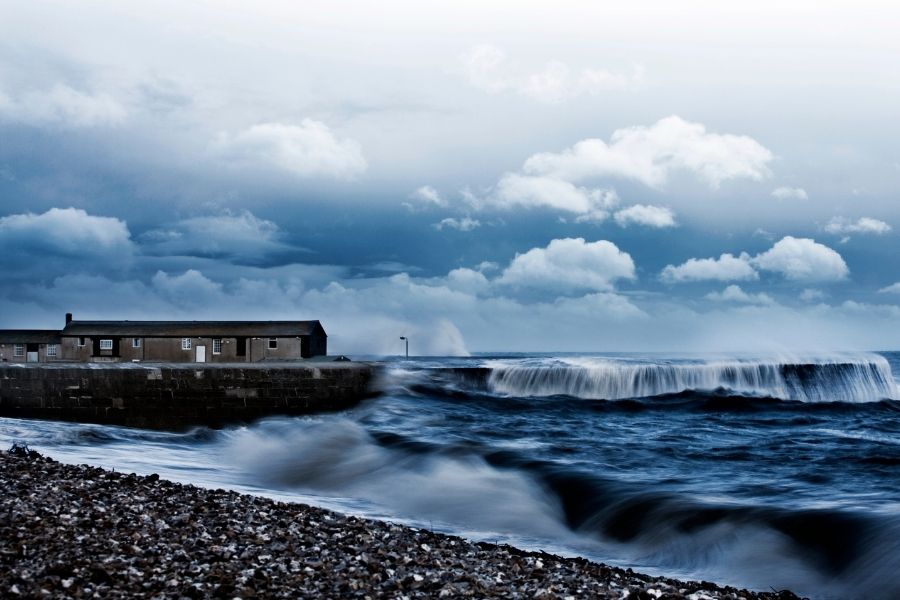
Lyme Regis weaves together history and fiction in a way that feels almost tangible. Local shops and information boards proudly highlight the Austen connection and nod to those famous film adaptations.
For anyone who loves literature, retracing the steps of Anne and Anna along the harbour is a treat. It brings a fresh, personal appreciation for Lyme Regis’s layered past.

